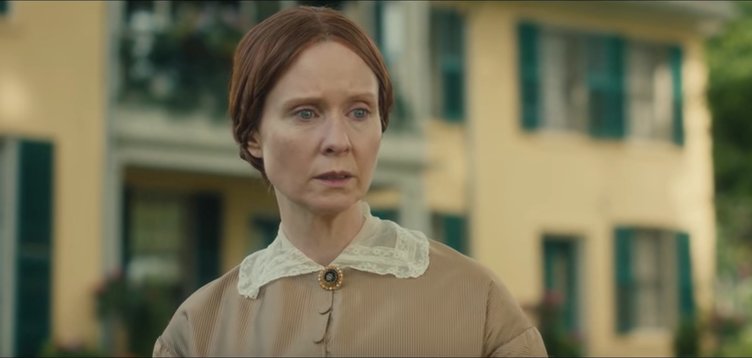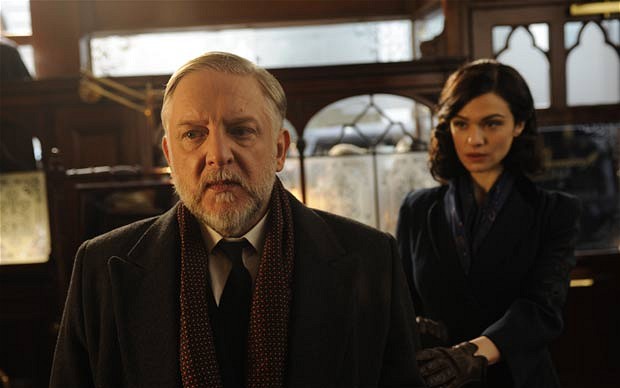
Cynthia Nixon plays the 19th Century American poet Emily Dickinson in the biopic A Quiet Passion. Even though the Dickinson family was free-thinking for its era, Protestant New England society was severe as the women’s hairstyle. As I watched these characters navigate their world, the words “forbidding” and “stern” kept coming to mind. It was an age where the groom kisses his new bride on the cheek, and a euphoric outburst is “Reverend Wadsworth’s sermon took my breath away.”
That’s a bad time and place to be innovative or iconoclastic. And a horrible time for a woman to seek recognition for her art. The Quiet Passion’s Emily Dickinson is in a constant state of social rebellion and always unappreciated as a poet.
She clearly appreciates the sexism of the era and is enraged by the injustice. She sees through the unnecessary constrictions of the religiosity of the day and is disgusted. Unfortunately, she also holds everyone to impossible standards. She suffers emotionally, and then begins to suffer physically. All of this makes her very unpleasant and difficult to live with.
Cynthia Nixon is a fine actress and vividly conveys Dickinson’s unhappiness. Nixon, of course, is known for playing Miranda, by far the most interesting character in Sex in the City. Nixon gets to showcase her wit when Dickinson and her sister (Jennifer Ehle) repress laughter during a hilariously awkward tea with Reverend Wadsworth and his abstemious and anti-social wife.
All of the cast in A Quiet Passion is good, with the exception of the hammy Duncan Duff, who plays Dickinson’s brother, who apparently was known for tightening his brow and popping his eyes. Catherine Bailey gets to sparkle as she pops off the wicked bon mots of Dickinson’s super ironic friend Vryling Buffam.
The British director Terence Davies is a critical favorite, and generously employs arty touches like static shots of long duration and the subjective view. But I have never warmed to his films.
Davies often follows scenes from Dickinson’s life with a voice over of a Dickinson poem on the same subject. So Dickinson’s poetry comments on Dickinson’s life. The problem is that The Quiet Passion is a daisy chain of unlinked anecdotes. For a linear story, the whole thing is distractingly disjointed.
The Quiet Passion is a dreary and ponderous film. I was actually rooting for Emily to die so the movie would be over.

